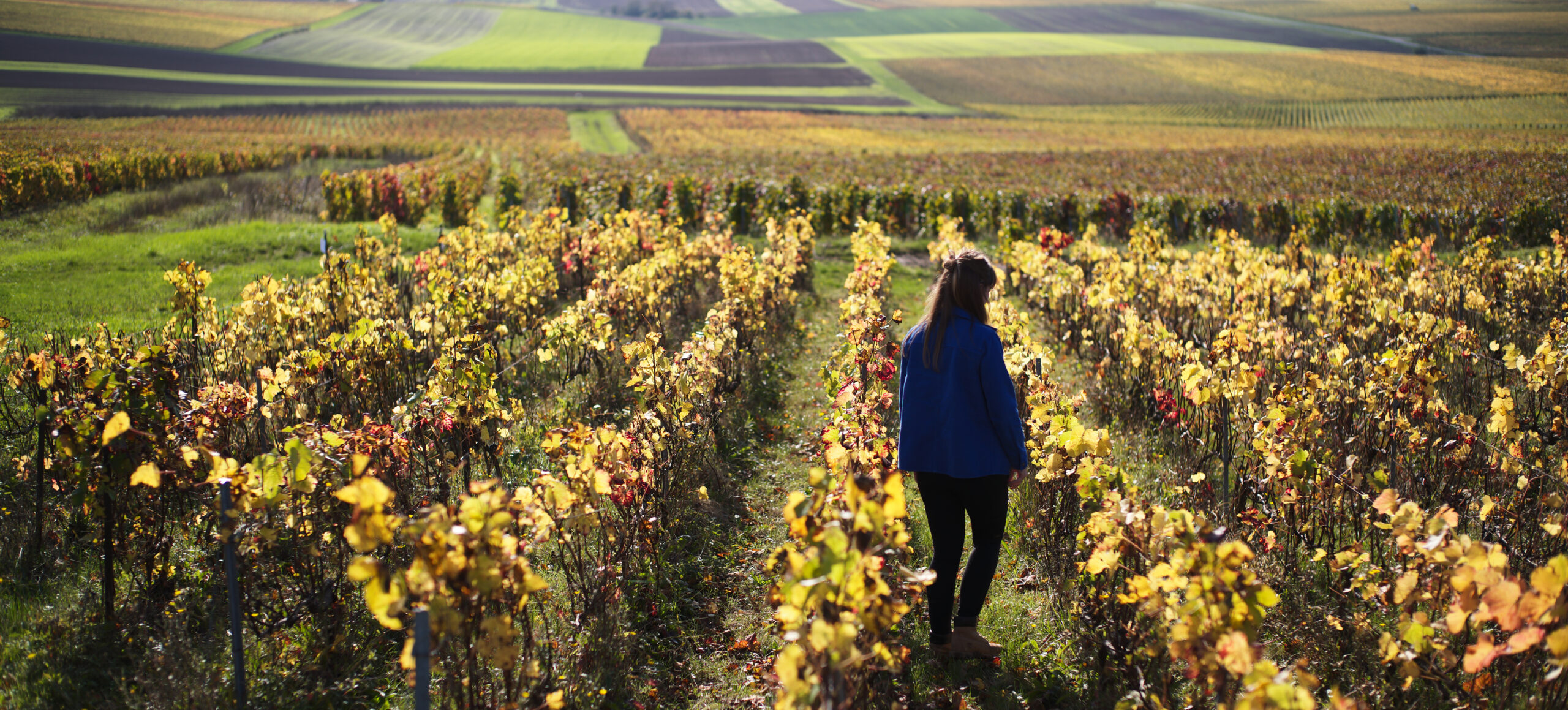One of the great pleasures of importing Champagne is the seemingly endless discovery of lesser-known villages and vineyards, and the growers bringing them to the world’s stage. Such is the case with the warm and creative Hélène Charbaut. With nearly three hectares spanning the villages of Mareuil-sur-Aÿ (0.50 hA), Avenay Val d’Or (0.25 hA), and Bisseuil (1.96 hA) — most of which were planted in the 1960s — Hélène is the fourth generation of her family to tend vines on the historic hillsides of the Grande Vallée de la Marne.
Like so many young winegrowers, Hélène sought early experiences outside of the family farm. From 2014 to 2018, she completed a wine management degree in Dijon, served in a marketing role at Bouchard Père et Fils, and worked at Champagne Leclerc Briant where she dabbled in a bit of everything and became so enthralled with biodynamics that she made it the subject of her dissertation. In 2019, she pursued her BTS in Viticulture Oenology and worked at Champagne Péhu Simmonet. David Péhu played a pivotal role in Hélène’s development, empowering her to do her own experiments and encouraging her to return to her family vines. Eventually the call of the vineyard was strong enough to draw her back, and in 2020 she joined her father Guy Charbaut and roped off choice vineyards to launch her eponymous label: Champagne Hélène Charbaut.
Hélène’s first vintage in 2020 produced a total of just 3,000 bottles across three different Champagnes, each from a single grape and single plot in the premier cru village of Bisseuil: “La Crayère” (100% Chardonnay), “La Pirouette’”(100% Pinot Noir), and “La Meunière”(100% Meunier). Bisseuil, home of her largest holdings, is located below the slopes of the Montagne de Reims, about 10 km east of Épernay on the opposite side of the Marne River. With primarily southern exposure, Chardonnay from Bisseuil tends to be rounder and more accessible than that of the Côte des Blancs. As Peter Liem notes: “Though Chardonnay is mostly a backstage player in the Grande Vallée, the premier cru Dizy (37% Chardonnay) joins Bisseuil (66% Chardonnay) as notable exceptions.”
With a deep connection to her land, Hélène pioneered a project to preserve and enrich her soils, as well as increase biodiversity throughout her Bisseuil vineyards. She began rotating a small herd of grazing sheep, relying on them to feed on the grasses and indigenous plants growing between vine rows, turning and fertilizing the soils in the process. The results were apparent and inspired interest among Hélène’s neighbors. Today, all five owners of the five hectares plot of Les Rocheforts have joined together to form a “grazing coop”. Such a visionary approach is emblematic of the efforts changing the literal and figurative landscape of Champagne.
In keeping with her aim to reveal the unique characteristics of village and vineyard, Hélène maintains a natural approach in the cellar, opting for very limited inputs during the winemaking process. She is convinced of the benefits of vinification and aging in oak barrels, giving each parcel a full nine months of barrel aging. The three parcellaire cuvées are all vintage dated and thus, spend 36 months sur lattes. Along with these, Hélène also has a blended “entry level” cuvée called “La Charbauterie” which contains all three main varieties, Pinot Noir, Meunier, and Chardonnay, from all three villages in which she owns vines. It spends 24 months sur lattes. Dosage, while generally low, is based on the individual cuvée and vintage.
Hélène Charbaut’s synthesis of old vines, holistic farming, and barrel aging produced a charming trio of inaugural cuvées that garnered attention in Champagne and beyond. As she slowly expands her production in the coming years, we are thrilled to represent Hélène and look forward to watching her vision take shape.







